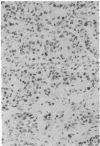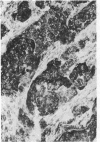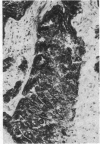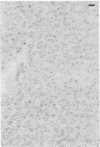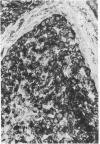Abstract
In an effort to devise an alternative treatment for human ovarian cancer, we have isolated a monoclonal antibody (OVB-3) that reacts with all ovarian cancers tested (10/10) but few normal tissues. An immunotoxin produced by coupling OVB-3 to Pseudomonas exotoxin kills ovarian cancer cells in tissue culture and prolongs the life of animals bearing human ovarian cancers. These data suggest that this immunotoxin should be evaluated as a treatment for ovarian cancer in women.
Full text
PDF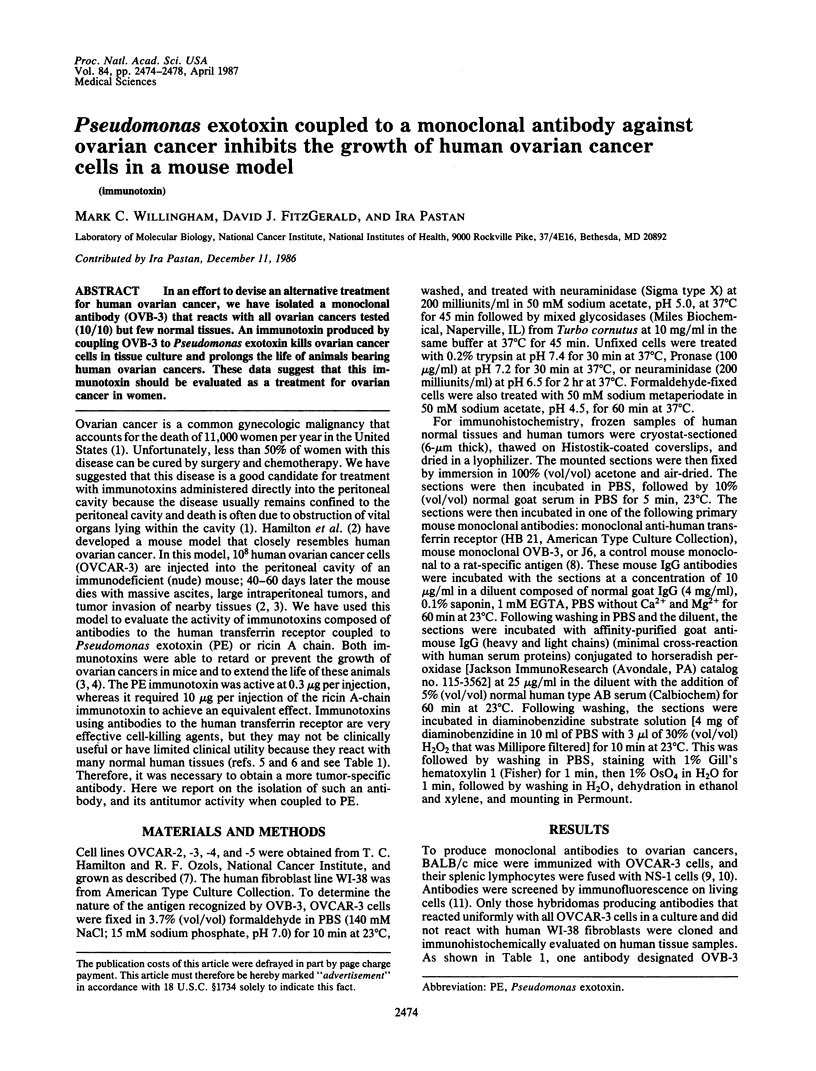

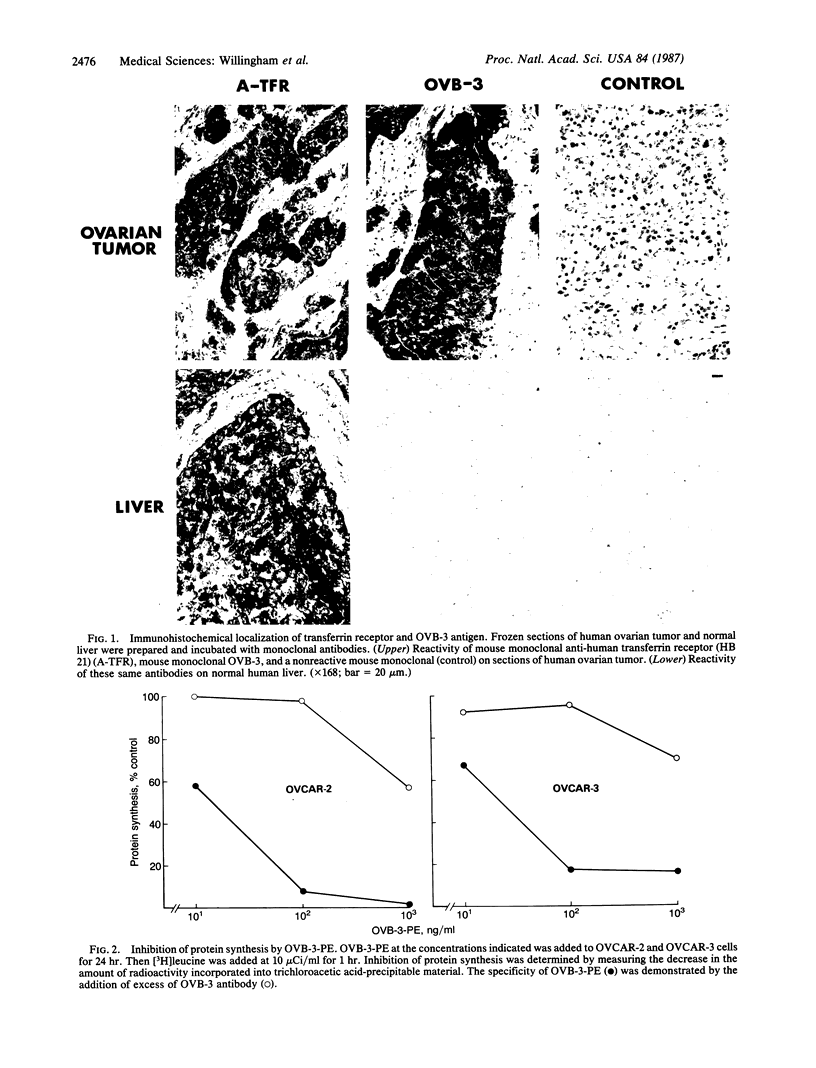
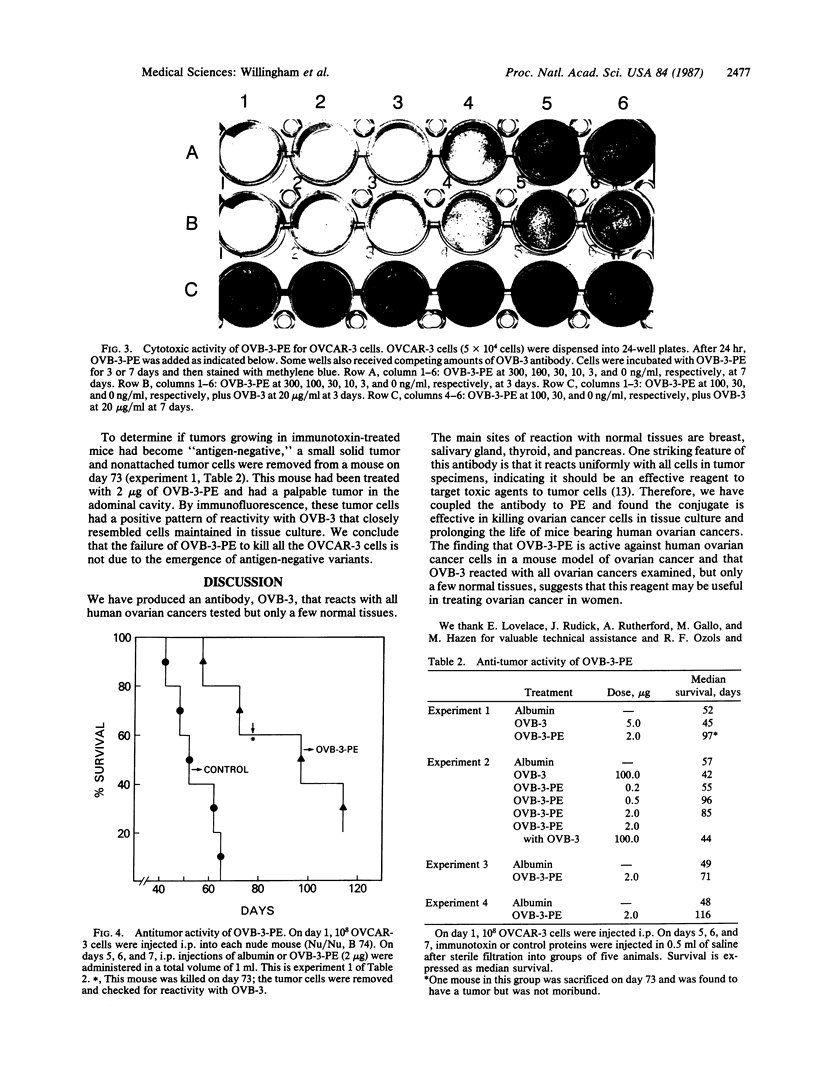
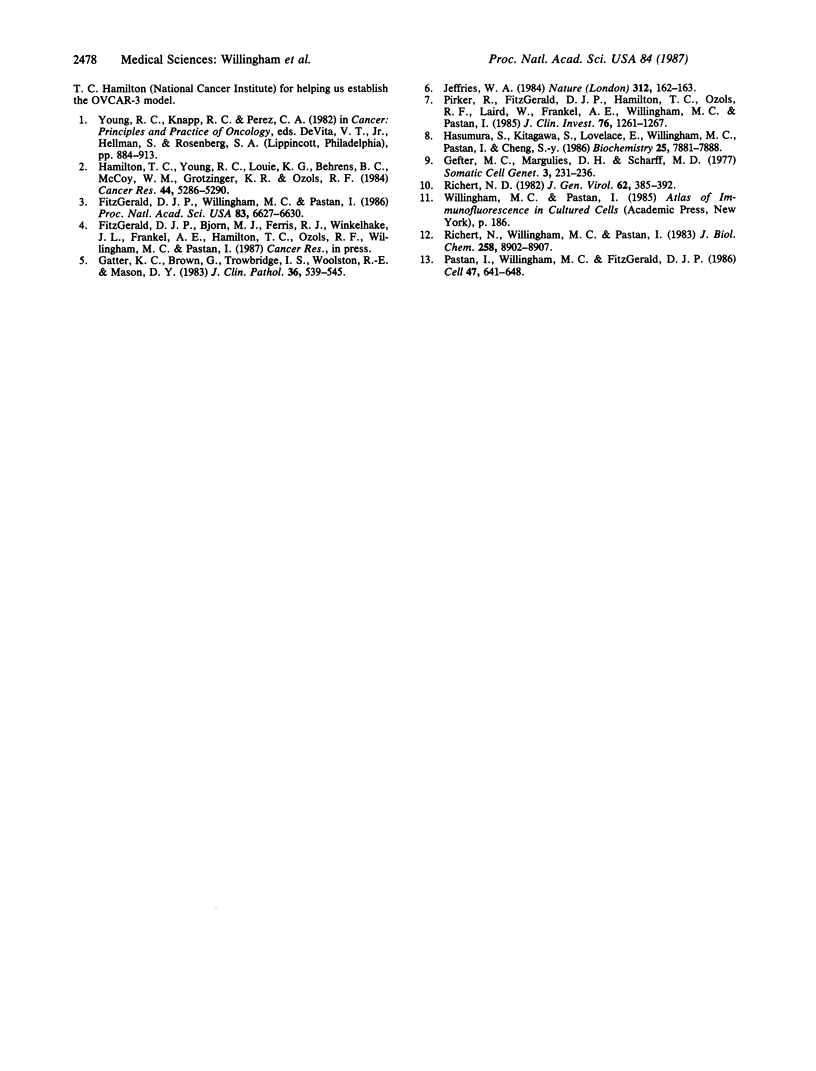
Images in this article
Selected References
These references are in PubMed. This may not be the complete list of references from this article.
- FitzGerald D. J., Willingham M. C., Pastan I. Antitumor effects of an immunotoxin made with Pseudomonas exotoxin in a nude mouse model of human ovarian cancer. Proc Natl Acad Sci U S A. 1986 Sep;83(17):6627–6630. doi: 10.1073/pnas.83.17.6627. [DOI] [PMC free article] [PubMed] [Google Scholar]
- Gatter K. C., Brown G., Trowbridge I. S., Woolston R. E., Mason D. Y. Transferrin receptors in human tissues: their distribution and possible clinical relevance. J Clin Pathol. 1983 May;36(5):539–545. doi: 10.1136/jcp.36.5.539. [DOI] [PMC free article] [PubMed] [Google Scholar]
- Gefter M. L., Margulies D. H., Scharff M. D. A simple method for polyethylene glycol-promoted hybridization of mouse myeloma cells. Somatic Cell Genet. 1977 Mar;3(2):231–236. doi: 10.1007/BF01551818. [DOI] [PubMed] [Google Scholar]
- Hamilton T. C., Young R. C., Louie K. G., Behrens B. C., McKoy W. M., Grotzinger K. R., Ozols R. F. Characterization of a xenograft model of human ovarian carcinoma which produces ascites and intraabdominal carcinomatosis in mice. Cancer Res. 1984 Nov;44(11):5286–5290. [PubMed] [Google Scholar]
- Hasumura S., Kitagawa S., Lovelace E., Willingham M. C., Pastan I., Cheng S. Characterization of a membrane-associated 3,3',5-triiodo-L-thyronine binding protein by use of monoclonal antibodies. Biochemistry. 1986 Dec 2;25(24):7881–7888. doi: 10.1021/bi00372a014. [DOI] [PubMed] [Google Scholar]
- Jefferies W. A., Brandon M. R., Hunt S. V., Williams A. F., Gatter K. C., Mason D. Y. Transferrin receptor on endothelium of brain capillaries. Nature. 1984 Nov 8;312(5990):162–163. doi: 10.1038/312162a0. [DOI] [PubMed] [Google Scholar]
- Pastan I., Willingham M. C., FitzGerald D. J. Immunotoxins. Cell. 1986 Dec 5;47(5):641–648. doi: 10.1016/0092-8674(86)90506-4. [DOI] [PubMed] [Google Scholar]
- Pirker R., FitzGerald D. J., Hamilton T. C., Ozols R. F., Laird W., Frankel A. E., Willingham M. C., Pastan I. Characterization of immunotoxins active against ovarian cancer cell lines. J Clin Invest. 1985 Sep;76(3):1261–1267. doi: 10.1172/JCI112082. [DOI] [PMC free article] [PubMed] [Google Scholar]
- Richert N. D. Monoclonal antibody specific for avian sarcoma virus structural protein p27. J Gen Virol. 1982 Oct;62(Pt 2):385–392. doi: 10.1099/0022-1317-62-2-385. [DOI] [PubMed] [Google Scholar]
- Richert N. D., Willingham M. C., Pastan I. Epidermal growth factor receptor. Characterization of a monoclonal antibody specific for the receptor of A431 cells. J Biol Chem. 1983 Jul 25;258(14):8902–8907. [PubMed] [Google Scholar]



